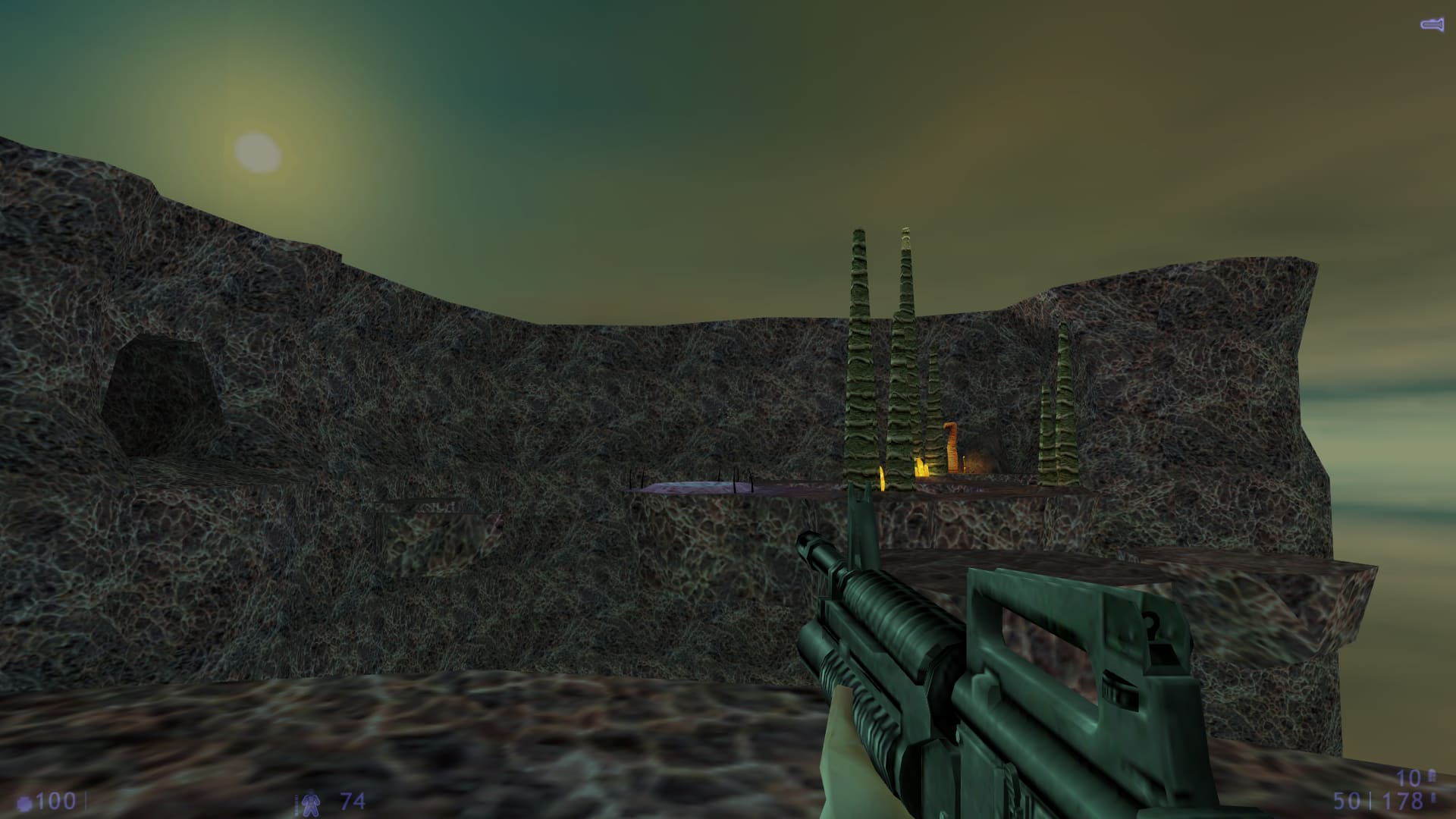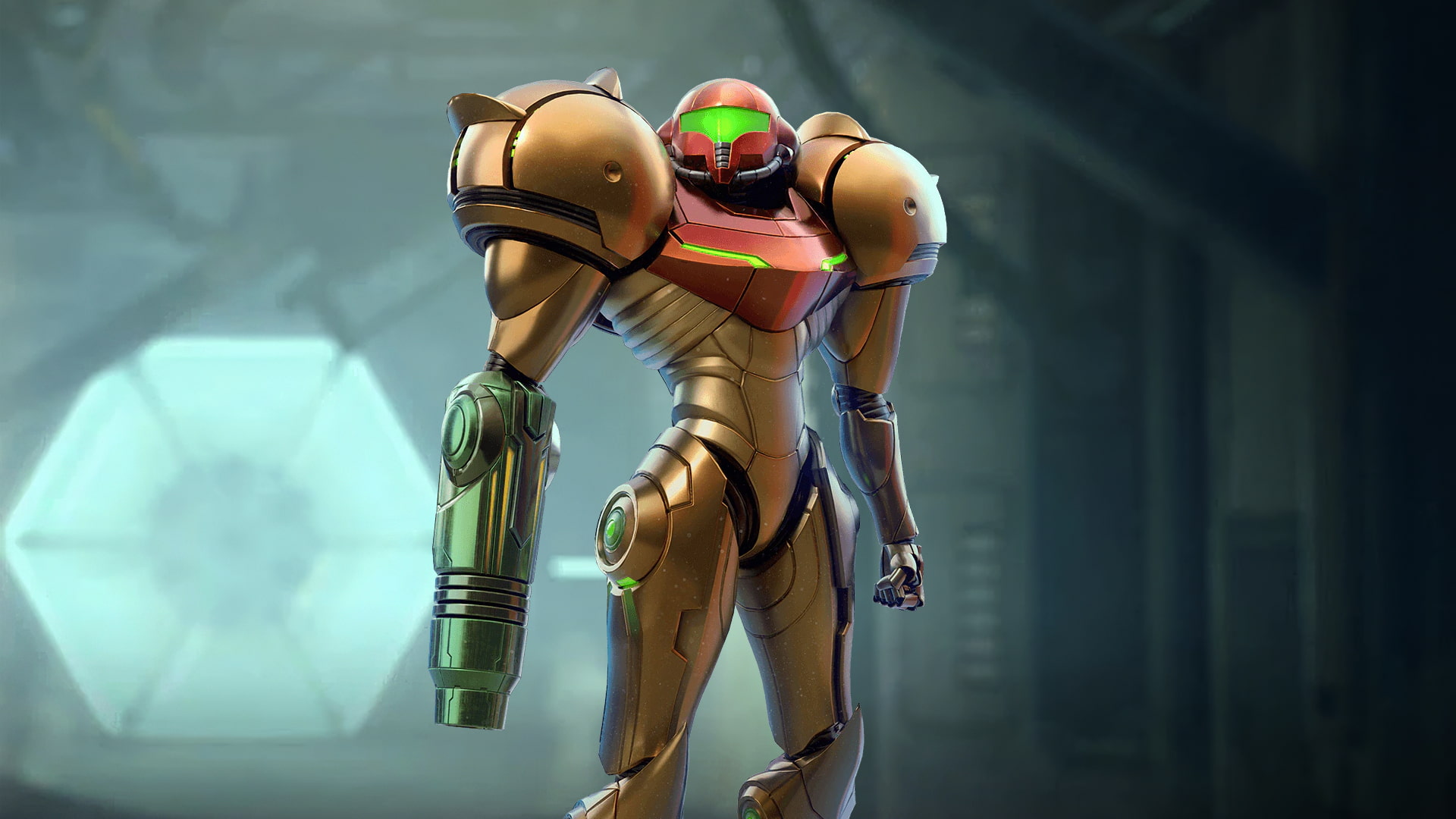After the release of Half-Life’s first expansion pack, Half-Life: Opposing Force, the attention of the expansion’s developers, Gearbox Software, moved towards a very different project: a port of Half-Life for the Sega Dreamcast, which was originally to launch with an exclusive expansion called Half-Life: Guard Duty.
The Dreamcast port was infamously cancelled just weeks away from release in a mostly finished state, but not all of the work put into it would get scrapped. The exclusive Dreamcast expansion ended up getting released on PC in 2001 under a new name, Half-Life: Blue Shift, bringing along some graphical enhancements that were planned for the Dreamcast version.
Created under unusual circumstances as basically a bonus for console players, how does this second expansion pack to the original Half-Life fare, both compared to its predecessor and on its own terms? Let’s step into Barney’s boots and find out.
Catch me later, I’ll buy you a beer
Whereas the first Half-Life put you in the HEV Suit of Gordon Freeman and Opposing Force in the boots of Marine corporal Adrian Shephard, Blue Shift once again lets you live through the Black Mesa Incident from a different perspective. This time, you are B. (Barney) Calhoun—only ever referred to as “Calhoun” in-game—, one of the security guards seen throughout the research facility, in what initially just seems like another day at work, until the resonance cascade interrupts some of your maintenance work and dumps you down the elevator shaft and straight into the alien-infested bowels of the facility.
While gameplay doesn’t change drastically from the previous two Half-Life games, playing as a security guard does add a notable quirk to the gameplay. Unlike Gordon Freeman and Adrian Shephard, who are equipped with an Hazardous EnVironment (HEV) suit and a Powered Combat Vest respectively, Calhoun’s only protection is the standard helmet and vest of the Black Mesa security team, meaning that the HEV suit chargers have absolutely no effect. Luckily for the player, Calhoun can still replenish his armor by picking up the vests and helmets of dead security guards he comes across on Black Mesa, a grim yet creative solution that really makes you feel like you’re not just another armored one-man army.

Otherwise, Half-Life: Blue Shift is, at this point, familiar to a fault—if you’ve played Half-Life and Opposing Force, you’ve seen it all before. It starts with yet another tram ride, drops you off to do some menial task, all hell breaks loose and you find yourself fighting off Xen aliens and, eventually, the military sent in to “clean up” the facility. You’ll probably find yourself with a sense of déjà vu as you repeat the same beats once again.
Interestingly, perhaps because Blue Shift started life as a presumably bite-sized expansion to the Dreamcast Half-Life release (and thus was more likely to reuse existing content than create new one from scratch), there are also no new weapons or enemies, unlike the previous expansion pack. In fact, barring one early cameo from “Otis”, the overweight security guard seen in Opposing Force, none of the additions from Opposing Force even make it into the game, meaning that only content previously available in the original Half-Life is seen here. This does mean that Blue Shift feels somewhat more faithful to the original Half-Life than Opposing Force did, but also less unique and memorable. You also do not even get access to the creative “scientific” and alien weaponry from the original Half-Life, being reduced to the mundane arsenal of a pistol, shotgun, submachine gun (or assault rifle depending on your graphical settings, but we’ll get to that) and a few explosives.
Maybe for its aforementioned origin as well, Blue Shift is also extremely short—whereas Half-Life will run you about 10 hours and Opposing Force trails behind closely with 8 to 9, Blue Shift can be completed in just 3 to 5 hours, depending on your level of familiarity with the gameplay and enemies. For an expansion rather than a full-length game, I’d argue that is an acceptable length, just be prepared for a short romp for your money. Of course, more important than how long a game lasts is how good it actually is.
Paging Doctor Rosenberg
As mentioned in our previous review, Opposing Force starts off strong but eventually loses steam and starts going in circles with bland fights against the new alien race, Race X, and the Black Ops assassins. Blue Shift’s short length, by comparison, is a bit of a blessing in disguise: it’s leaner and never gets as annoying or frustrating, hewing closer to the original Half-Life in terms of overall quality.
Let’s get the worst out of the way first: the lowest point in the game comes in the chapter Captive Freight, the fourth of eight chapters (including the tram ride at the start of the game), which has an underground section that resembles the excesses of Gearbox’s previous offering, with a cavalcade of vortigaunts and headcrabs being thrown at you in succession until you make your way past that particular area—I lost count of the number of headcrabs that leaped at me in just that section alone, but they were certainly in the dozens. As it happens, after Half-Life and Opposing Force, headcrab jump scares have long lost their novelty, making this part nothing but aggravating, but you can thankfully rush past it pretty quickly.
Other than that, Blue Shift is a pretty solid Half-Life game. The same chapter later moves on from the underground and Xen creatures into an area that resembles a high-octane, compressed Surface Tension, as you fight wave after wave of soldiers as you try to rescue a particular scientist, Doctor Rosenberg, who might have a way out of Black Mesa.
Doctor Rosenberg himself is something new for the Half-Life series. While certain characters in the original Half-Life would be retroactively established by Half-Life 2, Doctor Eli Vance in particular, Doctor Rosenberg is the first unique NPC of importance in the franchise. In fact, a lot of sequences with Doctor Rosenberg bring to mind the Half-Life sequel, particularly a teleportation sequence that is uncannily similar to what we would get out of Half-Life 2 later—one wonders if there was some inspiration from Valve’s early plans for the sequel or vice-versa, but it certainly bridges the gap between the two main entries brilliantly.
Eventually, the story circles back to send Calhoun to Xen, much like Gordon Freeman before him. Xen fares much better in Blue Shift than it did in Half-Life; there are still some platforming sections, but simplified by the lack of a long jump module, and the brief escapade never wears thin, unlike its predecessor, although it once again has an irritating habit of throwing headcrab after headcrab at you.

You also get to explore a rundown abandoned section of the Black Mesa research facility, giving you a bit more of history for this final trip to the facility, albeit gameplay-wise it’s very much unchanged (though the older chargers are a nice touch). Then the ending is somewhat underwhelming by basically being a dragged out fetch quest to get you right back where you started, but, without spoiling anything, it ends on a much more hopeful note than the remainder of the series—another way Blue Shift stands out from the rest.
Overall, the most apt description for Blue Shift is “short but sweet”. You can easily run through it in an afternoon, but during those precious hours you won’t get bored, stuck or sick of anything the game throws at you, with the possible exception of those nasty headcrabs. For a glorified extra of the Dreamcast game, it holds up particularly well; for its usual price on Steam nowadays, let alone its price on sale, it’s definitely worth a playthrough, even if what it brings new to the table is reduced to some narrative tricks that Half-Life 2 would eventually master much more impressively. Some might argue that it deserves a lesser score than Opposing Force just due to the stark difference in length, but I’d personally rather play a great, short game than a longer game with many more dull or unbalanced moments.
Bit of a gamble, but we need the extra resolution
Before we finish up, let’s talk briefly about the Half-Life High Definition Pack.
Another carry-over from the aborted Dreamcast port, the High Definition Pack is essentially an upgrade to the graphical fidelity of Half-Life and its expansions, having originally been released alongside Blue Shift, and replaces a variety of models, from non-playable characters to enemies and even your arsenal, with higher definition variants. In terms of sheer polygon count, it’s a definite improvement—models are far more detailed, going from the caricatures of the original game to something more appropriate of the early-2000’s PlayStation 2/Xbox/GameCube era.

However, some of the changes made are more drastic than a simple improvement in fidelity. Some of the weapons are replaced completely with different guns, most glaringly the submachine gun, which becomes an assault rifle that somehow shares an ammo pool with a Beretta pistol (itself a change from the classic Glock 17). Not all the changes are necessarily bad—the shotgun looks and especially sounds great, each shot now a thunder that gives it the oomph it always lacked—, but they are drastic revisions, arguably even more so conceptually than those of the eventual Source remake Black Mesa.
Whether you choose to play Half-Life and its expansions with the High Definition Pack is ultimately a matter of personal taste, but I will defend this: the PS2-era aesthetic has possibly aged worse than the very simplistic yet quaint original look, which, by virtue of being a lot more stylized, also ends up looking a lot more interesting. Call it rose-tinted glasses or just plain nostalgia goggles, but there’s a charm to the ’98 designs that does not translate to this stopgap between the Goldsource and Source graphical styles.
Final thoughts
Shorter but tighter than Opposing Force, Half-Life: Blue Shift is a mostly enjoyable final trip back into the Black Mesa research facility. While it can be safely skipped for those more interested in jumping straight into Half-Life 2 after playing the original Half-Life, those looking for more Half-Life are bound to appreciate this extra slice.
Half-Life: Blue Shift is available for purchase on Steam.


I don’t understand the hate on Gearbox’s expansions. To me, they did a great job. Again, great article!